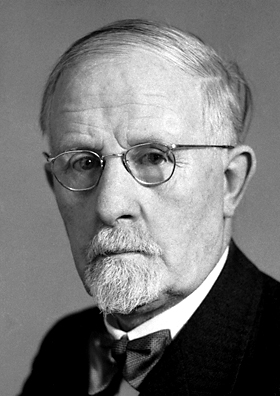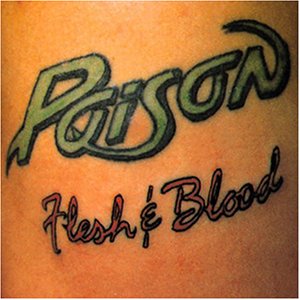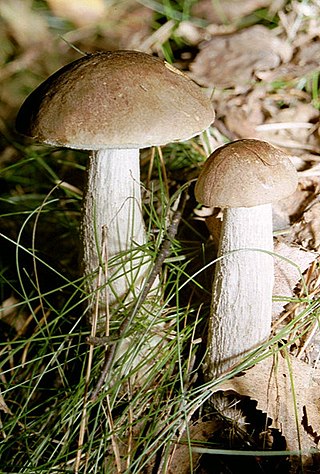
A vampire is a mythical creature that subsists by feeding on the vital essence of the living. In European folklore, vampires are undead creatures that often visited loved ones and caused mischief or deaths in the neighbourhoods which they inhabited while they were alive. They wore shrouds and were often described as bloated and of ruddy or dark countenance, markedly different from today's gaunt, pale vampire which dates from the early 19th century. Vampiric entities have been recorded in cultures around the world; the term vampire was popularized in Western Europe after reports of an 18th-century mass hysteria of a pre-existing folk belief in Southeastern and Eastern Europe that in some cases resulted in corpses being staked and people being accused of vampirism. Local variants in Southeastern Europe were also known by different names, such as shtriga in Albania, vrykolakas in Greece and strigoi in Romania.

In physiology, dehydration is a lack of total body water, with an accompanying disruption of metabolic processes. It occurs when free water loss exceeds free water intake, usually due to exercise, disease, or high environmental temperature. Mild dehydration can also be caused by immersion diuresis, which may increase risk of decompression sickness in divers.

Starvation is a severe deficiency in caloric energy intake, below the level needed to maintain an organism's life. It is the most extreme form of malnutrition. In humans, prolonged starvation can cause permanent organ damage and eventually, death. The term inanition refers to the symptoms and effects of starvation. Starvation may also be used as a means of torture or execution.

Necrotizing fasciitis (NF), also known as flesh-eating disease, is a bacterial infection that results in the death of parts of the body's soft tissue. It is a severe disease of sudden onset that spreads rapidly. Symptoms usually include red or purple skin in the affected area, severe pain, fever, and vomiting. The most commonly affected areas are the limbs and perineum.

Thirst is the craving for potable fluids, resulting in the basic instinct of animals to drink. It is an essential mechanism involved in fluid balance. It arises from a lack of fluids or an increase in the concentration of certain osmolites, such as sodium. If the water volume of the body falls below a certain threshold or the osmolite concentration becomes too high, structures in the brain detect changes in blood constituents and signal thirst.

Walter Rudolf Hess was a Swiss physiologist who won the Nobel Prize in Physiology or Medicine in 1949 for mapping the areas of the brain involved in the control of internal organs. He shared the prize with Egas Moniz.

Blood limes are a hybrid citrus fruit developed by the CSIRO project to investigate salt-resistant crops.
The Swadesh list is a classic compilation of tentatively universal concepts for the purposes of lexicostatistics. Translations of the Swadesh list into a set of languages allow researchers to quantify the interrelatedness of those languages. The Swadesh list is named after linguist Morris Swadesh. It is used in lexicostatistics and glottochronology. Because there are several different lists, some authors also refer to "Swadesh lists".

Flesh & Blood is the third studio album by American glam metal band Poison, released on July 2, 1990, through the Enigma label of Capitol Records. It peaked at number 2 on the Billboard charts and more than 7.2 million copies were sold worldwide. It peaked at number 1 on the Cash Box charts.
Abscess was an American death metal band from Oakland, California. The band was formed in June 1994 by Chris Reifert and Danny Coralles, both former members of Autopsy. Abscess disbanded in 2010.
ICD-9-CM Volume 3 is a system of procedural codes used by health insurers to classify medical procedures for billing purposes. It is a subset of the International Statistical Classification of Diseases and Related Health Problems (ICD) 9-CM. Volumes 1 and 2 are used for diagnostic codes.

BallaleshwarPali is one of the eight temples of the Hindu God Ganesha. Among Ganesha temples, Ballaleshwar is the only one dedicated to Ganesha that is known by his devotee's name. It is located in the village of Pali which is 28 km from Roha in the Raigad district of Maharashtra, India. It is situated between fort Sarasgad and the river Amba.
Self-cannibalism is the practice of eating parts of one's own body, also called autocannibalism or autosarcophagy. Generally, only the consumption of flesh by an individual of the same species is considered cannibalism. In line with this usage, self-cannibalism means the consumption of flesh from one's own body. While some texts use this strict definition, others use the term autocannibalism in a wider sense that includes the consumption of hair or nails from one's own body.

Leccinum scabrum, commonly known as the rough-stemmed bolete, scaber stalk, and birch bolete, is an edible mushroom in the family Boletaceae, and was formerly classified as Boletus scaber. The birch bolete is widespread in Europe, in the Himalayas in Asia, and elsewhere in the Northern Hemisphere, occurring only in mycorrhizal association with birch trees. It fruits from June to October. This mushroom is also becoming increasingly common in Australia and New Zealand where it is likely introduced.
Hyperosmolar hyperglycemic state (HHS), also known as hyperosmolar non-ketotic state (HONK), is a complication of diabetes mellitus in which high blood sugar results in high osmolarity without significant ketoacidosis. Symptoms include signs of dehydration, weakness, leg cramps, vision problems, and an altered level of consciousness. Onset is typically over days to weeks. Complications may include seizures, disseminated intravascular coagulopathy, mesenteric artery occlusion, or rhabdomyolysis.

Dream into Action is the second studio album by British pop musician Howard Jones. It was released in March 1985 and reached No. 2 in the UK Album Charts. The album also reached the top ten in the U.S. The album achieved a gold certification in the UK and platinum status in the US and Canada.

Naked City: The Complete Studio Recordings is a five disc box set that contains all of the studio albums released by Naked City during their five-year history.
Homeostatic feeling is a class of feelings that inform us about our physiological condition. In his earlier work Antonio Damasio used "primordial feeling" but he now prefers the term "homeostatic feeling" for the class: "Homeostatic feelings are feelings such as hunger, thirst, pain, desire, wellbeing, as well as the continuous feelings of life itself."
Hunger is a sensation that motivates the consumption of food. The sensation of hunger typically manifests after only a few hours without eating and is generally considered to be unpleasant. Satiety occurs between 5 and 20 minutes after eating. There are several theories about how the feeling of hunger arises. The desire to eat food, or appetite, is another sensation experienced with regards to eating.
Brihadratha, belonging to the Ikshvaku race, was a king of the Vedic era. This name Brihadratha of a warrior king who was a Maharatha is found in the Rig Veda. The word, Brihadratha, means the Mighty Warrior. He appears at the beginning of the Maitri Upanishad after he had renounced his kingdom in favour of his son, seeking for himself relief from the endless cycle of birth and rebirth. No other information about him or his period is available in this text or in any other text. Maitri Upanishad belongs to the Maitrayaniya branch of Krishna Yajur Veda, which upanishad was taught to Sakayana by Maitri or Maitreya, the son of Mitra. Brihadratha chose the knowledge of the Self when he was offered a boon. He gave up his home and possessions and thereafter assisted by Sakayanya even renounced the “I-ness” of his body.












